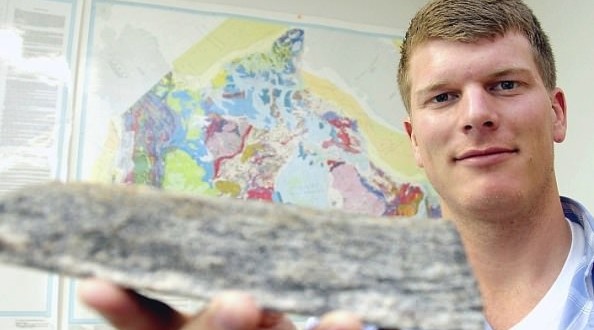The rocks about four-billion-year-old showed crust-forming processes that are very similar to those occurring in present-day Iceland.
“This provides the first physical evidence that a setting similar to modern Iceland was present on the early earth,” said Jesse Reimink from University of Alberta in Canada, who collected and studied rock samples from the Acasta Gneiss Complex in Canada.
Continents today form when one tectonic plate shifts beneath another into Earth’s mantle and cause magma to rise to the surface, a process called subduction. It’s unclear whether plate tectonics existed 2.5 billion to four billion years ago or if another process was at play, says Reimink.
One theory is the first continents formed in the ocean as liquid magma rose from Earth’s mantle before cooling and solidifying into a crust.
Iceland’s crust formed when magma from the mantle rises to shallow levels, incorporating previously formed volcanic rocks. For this reason, Reimink says Iceland is considered a theoretical analogue on early Earth continental crust formation.
Ancient rocks 3.6 to four billion years old
A sample of ancient rock from the Acasta Gneiss Complex in the Northwest Territories
Working under the supervision of co-author Tom Chacko, Reimink spent his summers in the field collecting rock samples from the Acasta Gneiss Complex, which was discovered in the 1980s and found to contain some of Earth’s oldest rocks, between 3.6 and four billion years old. Due to their extreme age, the rocks have undergone multiple metamorphic events, making it difficult to understand their geochemistry, Reimink says.
Fortunately, a few rocks — which the research team dubbed “Idiwhaa” meaning “ancient” in the local Tlicho dialect — were better preserved. This provided a “window” to see the samples’ geochemical characteristics, which Reimink says showed crust-forming processes that are very similar to those occurring in present-day Iceland.
“This provides the first physical evidence that a setting similar to modern Iceland was present on the early Earth.”
These ancient rocks are among the oldest samples of protocontinental crust that we have, he adds, and may have helped jump-start the formation of the rest of the continental crust.
Reimink, who came to the U of A to work with Chacko, says the university’s lab resources are “second to none,” particularly the Ion Microprobe facility within the Canadian Centre for Isotopic Microanalysis run by co-author Richard Stern, which was instrumental to the discovery.
“That lab is producing some of the best data of its kind in the world. That was very key to this project.”
Agencies/Canadajournal/Press Releases

 Canada Journal – News of the World Articles and videos to bring you the biggest Canadian news stories from across the country every day
Canada Journal – News of the World Articles and videos to bring you the biggest Canadian news stories from across the country every day

